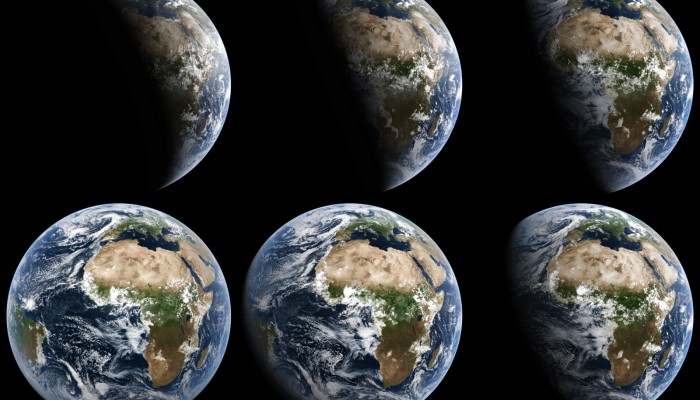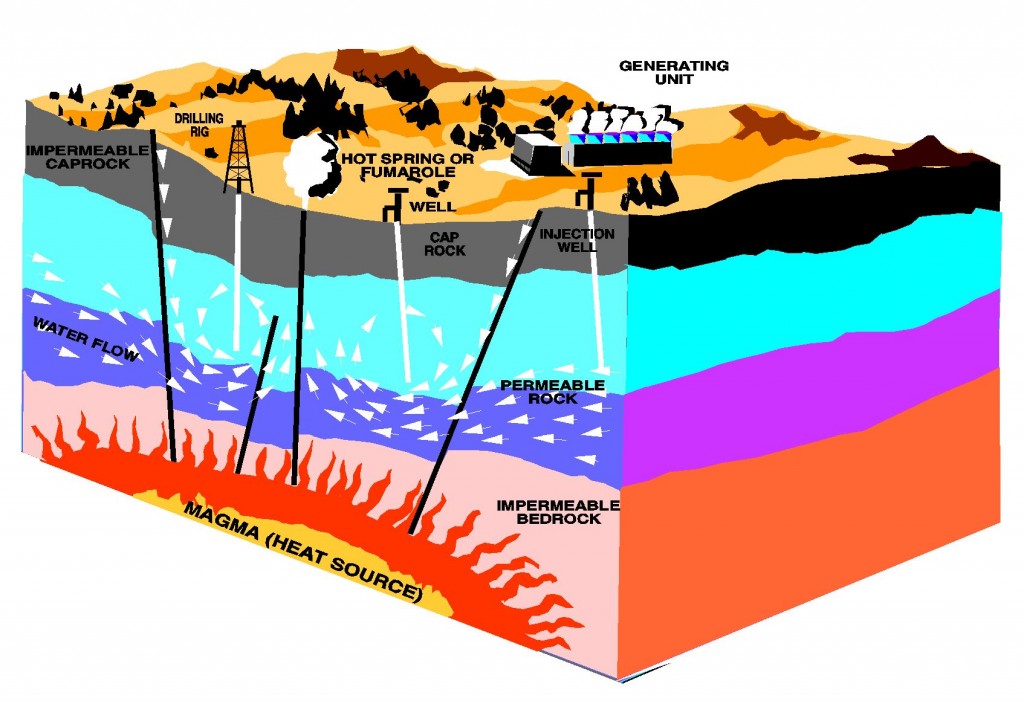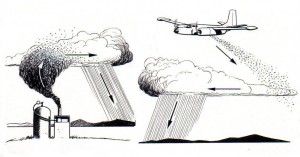
What are the most interesting, cutting-edge and compelling research topics within the scientific areas represented in the EGU divisions? Ground-breaking and innovative research features yearly at our annual General Assembly, but what are the overarching ideas and big research questions that still remain unanswered? We spoke to some of our division presidents and canvased their thoughts on what the current Earth, ocean and planetary hot topics will be.
Because there are too many to fit in a single post we’ve brought some of them together in a series of posts which will tackle three main areas. The first post focused on the Earth’s past and its origin, while today’s post will focus on the present Earth and its future. The final post of the series will explore where our understanding of the Earth and its structure is still lacking. We’d love to know what the opinions of the readers of GeoLog are on this topic too, so we welcome and encourage lively discussion in the comments!
Sustainable development
As populations across the globe continue to grow, geoscientists have a key role to play in sustainable development. The demands placed on planet Earth to supply our societies with anything from drinking water to food and energy are ever rising. Managing these resources in a way that ensures we can meet the needs of current and future generations is one of the biggest challenges faced by scientists and policy makers worldwide.
Humanity’s pursuit of a sustainable future, where our activities do not contribute to increased greenhouse gas emissions to the atmosphere (something which has be high on policymakers agenda’s recently) will open new, important, avenues of research. Goals need to be achieved so that food, energy and water resources are available for future generations and methods must be found to exploit resources in a way that minimises the impact on the environment.
Producing fuel for a growing population
The boundaries of technology and our knowledge of where and how resources can be exploited will be pushed as the demands for energy increase. Traditional oil and gas resources will continue to be exploited, but new emerging technologies and fuel sources will mean a shift to lesser known research areas.
Angelo De Santis, President of the Earth Magnetism and Rock Physics (EMRP) Division adds that: “Such fields as rock physics, geomagnetism and rock magnetism will have a role to play in future resource exploration.”
Perusing the programme of the 2016 General Assembly gives a flavour of some of the emerging avenues of research in this field. Take for instance deep geothermal reservoirs: this little know source of renewable energy provides an alternative to conventional fuel sources, with the potential to reduce fossil-fuel consumption as well as curbing greenhouse-gas emissions. Yet, the understanding of how to engineer the reservoirs so that they remain productive and safe over long time-scales is still being developed, and having better handle on the rock physics and mechanics of the reservoirs would help in this regard.

“Geothermal energy methods“. Licensed under Public Domain via Commons.
Ensuring the integrity of any reservoir be it conventional or unconventional, requires collaboration. Seismology has a large part to play here too. Away from the well-known and exciting work being carried out on understanding earthquakes, the field of ‘ambient noise’ seismic data has the potential to revolutionise our understanding of Earth dynamics and can be applied to monitoring changes in zones of natural and induced (minor tremors caused by human activity) seismicity in oil & gas reservoirs and also geothermal fields, highlights P. Martin Mai, President of the Seismology (SM) Division.
In seismology, ambient noise, or “background noise” recorded on seismic instruments refers to the seismic energy that is continuously generated by various natural (e.g. ocean waves, wind, etc) and man-made (traffic, industrial activities) processes. Classically, seismology wants to avoid any noise contamination of seismic recordings, as the noise masks or even destroys the desired “deterministic” signals from earthquakes or exploration-driven seismic excitations. However, experimental and theoretical work over the last ~10 yrs has shown that the mathematically predicted relation between “noise” and the Earth elastic properties can be applied to use “noise” for making inference about Earth structure. “Ambient noise” studies in seismology have been used, for instance, to infer properties of the Earth crust and how it may change on small scales (like in earthquake fault zones) over time, but ‘ambient noise tomography’ also helps to unravel Earth properties in the upper mantle (down to ~150 km depth). Research in ambient-noise seismology requires dense seismic recording networks that continuously record the subtle movements of the ground. Advanced processing and interpretation techniques then allow to also, for instance, monitor the processes within, and thus the state, or geothermal or oil & gas reservoirs.
Raw materials

A new rural landscape in Irpinia. Credit: Sabina Porfido (distributed via imaggeo.egu.eu)
According to Chris Juhlin, President of Energy, Resources and Environment (ERE) Division, it will be crucial for scientists in this field not only to focus on establishing how energy can be produced in a way that will continue to allow societies to live comfortably, but also establish where the resources to produce and supply energy will come from.
The advantages of exploiting resources, such as solar, wind, geothermal energy and nuclear energy over fossil fuels are clear: their emissions of greenhouse gases to the atmosphere are limited. That being said, an often overlooked fact is that they still require natural resources in order to operate.
Juhlin uses wind turbines as an example to illustrate the point: “Wind turbines require significant amounts of rare earth metals, as well as steel, to be built. These metals need to be mined and the mining operation produces CO2.”
Both mining of metals and storage of nuclear waste require that sophisticated geological, geochemical and geophysical surveying methods are available. Not only that, when finding and choosing new locations to mine for resources and store waste, looking at the bigger picture is also important. How these human activities will affect the ecosystems in which they take place will take on greater significance as the loss of habitats and biomes increases.
Juhlin emphasises that: “It is important to understand how a decision at local level may affect the energy balance on a global level.”
Defining a new geological epoch – The Anthropocene
That humans will leave their mark on Earth is undeniable. Human kind has already caused extinctions, polluted oceans and the atmosphere, as well as influenced land use and biodiversity. But pin-pointing the exact time at which our actions became a major geological agent is a source of heated debate.
Traditionally, new epochs are defined by an abrupt change in the chemistry of rock strata which signifies the occurrence of a major geological or palaeontological event. However, in the case of defining the age of humans, the Anthropocene, the lack of a rock record makes applying this traditional approach difficult.
Nevertheless, since it was introduced in 1980s and popularised in the past decade or so, the notion of the Anthropocene epoch has been gaining momentum and opened up further research questions.
Helmut Weissert, President of the Stratigraphy, Sedimentology, and Palaeontology (SSP) Division, says that comparing the role humans have played versus past natural variations is becoming increasingly important. Take an example: what role have humans played in accelerated soil erosion vs. natural variations? Equally, what role has humankind played in affecting the global biogeochemical cycles? By comparing current changes with natural changes recorded in marine and lake sediments we may better understand the role humans have played in shaping the modern Earth.
An exotic solution?
The scientific consensus is that in order to minimise our impact on the planet, while at the same time moving towards zero net emissions of greenhouse gases by the second half of this century, a combination of approaches are needed. While renewable resources and nuclear energy will provide energy which has minor contributions to greenhouse-gas emissions, it is just as important to reduce and find ways to deal with emissions from burning fossil fuels (think carbon capture and storage).

Sketch illustrating the process of cloud seeding. Cloud seeding by DooFi. Distributed via Wikimedia
Geoengineering might provide a more exotic solution to the problem. The premise behind it is to use technology to counter the effects of a warming climate. Proposed solutions include reflecting sunlight into space to cool the planet, cloud seeding, scrubbing CO2 out of the atmosphere, … But at this stage, the majority are deemed unrealistic; not to mention that there is an ongoing ethical debate as to whether they should be used at all and that the consequences of their implementation are also largely unclear
So it seems, the presence of human kind on Earth has paved the way for an astonishing period of research, not only in the geosciences but also in other fields, fuelling an exciting opportunity for cross-disciplinary investigation. And the time is most certainly now, if we are to minimise the mark we leave on the planet while at the same time ensuring a sustainable future for generations to come.
By Laura Roberts Artal, EGU Communications Officer in collaboration with EGU Division Presidents
Next time, in the Geosciences hot topics short series, we’ll be looking at our understanding of the Earth as we know it now and how we might be able to adapt to the future.





Pingback: GeoLog | Geoscience hot topics – The finale: Understanding planet Earth
Pingback: GeoLog | Geoscience hot topics – Part II: the Earth as it is now and what its future looks like | Ukko Elhob's World
Giuseppe Di Capua
Topics to be discussed in the session EOS5 “Geoethics: theoretical and practical aspects from research integrity to relationships between geosciences and society” organized by the IAPG – International Association for Promoting Geoethics at the next EGU General Assembly, 2016: http://www.geoethics.org/egu2016.html